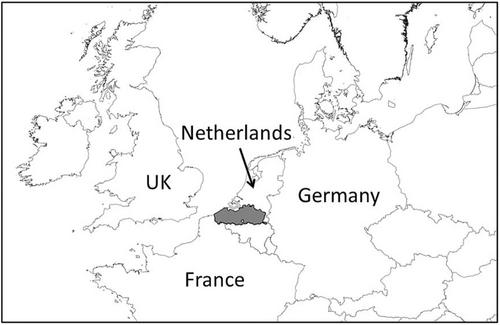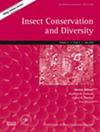用物种特征指导人为地区的飞蛾保护:利用佛兰德斯(比利时北部)分布趋势的多物种方法
IF 3.2
2区 农林科学
Q1 ENTOMOLOGY
引用次数: 0
摘要
近几十年来,昆虫的数量和多样性似乎在迅速减少,引起了媒体的极大关注,从而提高了公众的认识。大型蛾类--物种丰富、生态多样的昆虫类群--面临着严重的衰退,尤其是在西北欧的城市化和集约化耕作地区。佛兰德斯是一个高度人为化的地区,作为一个案例研究,我们通过最近编制的红色名录量化了集约农业、工业化和城市化等压力因素对大型蛾类的影响。在这里,我们计算了717种大型蛾类在参照期(1980-2012年)和后续期(2013-2022年)之间分布面积的相对变化。通过将这些物种特异性趋势与 10 个关键生态和生活史特征相关联,我们计算出了更普遍的多物种变化指数(MSCIs)。这些多物种变化指数显示,与潮湿生物群落和荒地相关的物种平均减少了20%-25%,而(亚)城市物种则增加了60%以上。以地衣或苔藓为食的物种增加了 31%,而以草为食的物种减少了 20%。小型(+34%)和大型(+15%)物种都有所增加,而中型物种则减少了 5%。单食性(+17%)、迁徙性(+88%)和变色物种(+5%)有所增加,而变色物种有所减少(-8%)。最后,全北(-21%)和古北物种(-5%)减少,而地中海(+27%)和西古北物种(+9%)增加。我们基于性状的方法确定了人类活动区域蛾类面临的主要威胁和缓解策略,为制定有效的管理建议和保护蛾类群落的知情政策提供了基于证据的见解。本文章由计算机程序翻译,如有差异,请以英文原文为准。


Species traits to guide moth conservation in anthropogenic regions: A multi-species approach using distribution trends in Flanders (northern Belgium)
求助全文
通过发布文献求助,成功后即可免费获取论文全文。
去求助
来源期刊
CiteScore
7.70
自引率
8.60%
发文量
58
审稿时长
>12 weeks
期刊介绍:
To publish papers of the highest scientific quality within the general area of insect (and other arthropods) conservation and diversity covering topics ranging from ecological theory to practical management.
Papers are invited on the following topics: Conservation genetics; Extinction debt; Long-term conservation planning and implementation; Global implications of local or national conservation actions; Management responses of species and communities; Captive breeding programs; Comparisons of restored and natural habitats; Biogeography; Global biodiversity; Metapopulation dynamics; Climate change: impacts on distributions and range; Invasive species: impacts and control; Effects of pollution; Genetic threats to diversity by introgression; Effects of fragmentation on diversity and distribution; Impact of agricultural and forestry practices on biodiversity; Enhancing urban environments for diversity and protection; Biodiversity action plans: can we scale up from insects?; Effectiveness and choice of indicator species; Soil biodiversity and interactions with above-ground biodiversity; Ecological interactions at local levels; Ecological and evolutionary factors influencing diversity and local, regional and global scales; Sustainable livelihoods and training on the ground; Integrating science and policy.

 求助内容:
求助内容: 应助结果提醒方式:
应助结果提醒方式:


